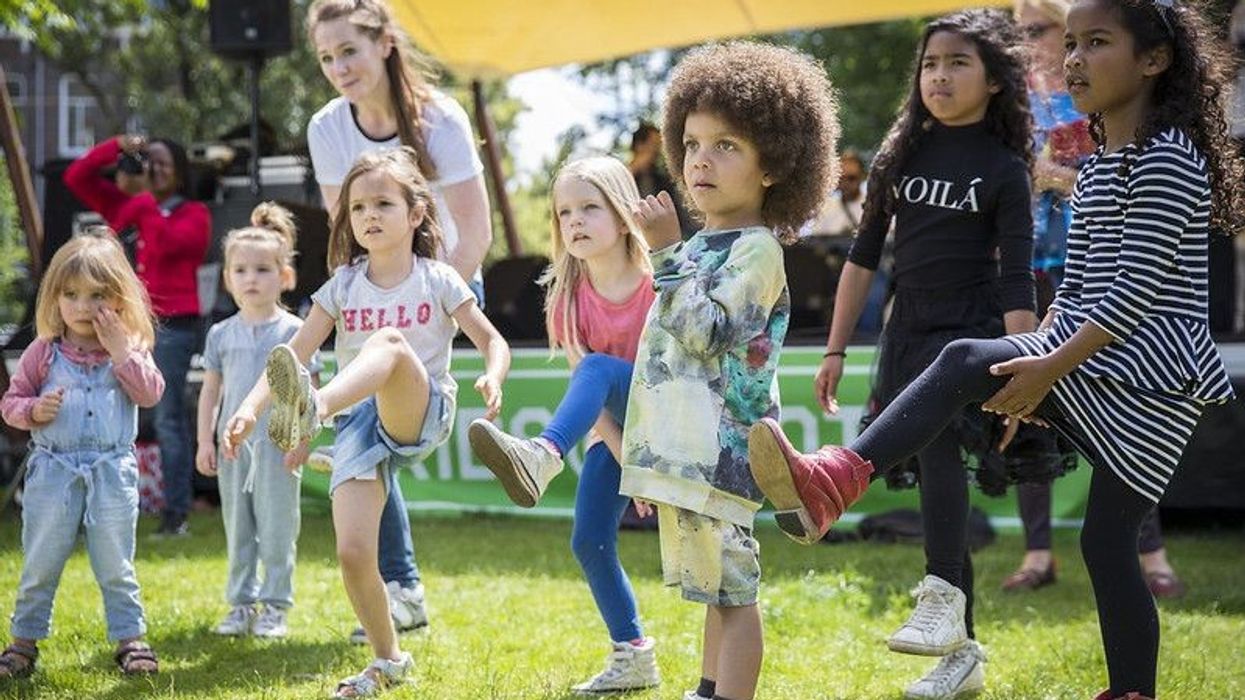Homeschooling throws up a lot of questions and anxiety.
However, as a trained professional, Jenny Sandler is adept at eliminating stress from these new, educational frontiers. Here she shares more expert advice around some of the most commonly posed queries we all have.
What about friends?
Kids are generally very social and it’s only now that I’ve realised how difficult being stuck at home is for them. Of course it’s challenging for us adults, but we have a lot more social interaction than they do.
We are constantly in touch with friends on WhatsApp, we’ve got work interaction on Zoom, we can check in on FaceBook, call our friends on the phone and hangout on House Party. Our children do not have access to any of this and are struggling.
Zoom is great, but it can be overwhelming when there’s a large group. So we need to think carefully how we utilise telecoms with children.
Younger children interact through play so it might be better to organise a Zoom or Skype play-date whereby your child does the same activity as their friend at the same time. They can both play with Play-Doh/Lego/Barbies while the computer is on.
They’ll talk about what they’re doing and share their creations and conversation will develop naturally through play. Other ideas I have are to play I-Spy using what you can see in the camera, playing online games together and playing traditional board games where both parties own the same game.
Older or more responsible children can work together. In the same way that we used to do our homework over the phone with friends (and have a good catch up in the process), they can work together over Zoom and socialise that way.
You can even share a documentary over Zoom and they can complete a related writing task together. Adult moderated activities are great for large groups.
I’ve been playing maths BINGO with my children’s classes... It’s been going a lot better since I realised I could mute the children! Other parents have been playing games, teaching skills (including football), or reading stories.
In this bizarre of period of social distancing screens and devices have become the lynchpins of our social lives and used correctly can help our children connect with their friends.
Do we need a schedule?
There’s a lot of buzz surrounding homeschool schedules. If scheduling every minute works for you then make a detailed plan, if that’s not what you need then don’t.
You should however schedule your children’s ‘school time’. Select the times that you are dedicating to school.
This includes times you are around to support your child as well as the times they need to work independently. Think about your own work and home responsibilities and designate two to three hours (more or less depending on ages and what’s being sent home from school) a day for school-work. Mornings are generally better for children.
My children are working around my schedule so some days they have long periods of work (with breaks) and other days several shorter blocks. Children find it helpful to know when they are expected to work and when they can play or watch TV.
The next thing you might want to do is schedule the work they are expected to complete during this time. A simple checklist (math, English, history) will do, but you can be more specific (math pages 11-12, phonics, reading, history YouTubes one and two).
Draw tick boxes so your children can cross items off the list as they progress. Plan to give them the work they enjoy the least or find the hardest first because they will be more motivated to do it if there is something better afterwards.
Breaks are really important and children (and adults) benefit from a quick movement break every 30-40 minutes. Think about how your child manages transitions because some children find it very hard to refocus on their work after they’ve had a break.
If you’ve got a limited amount of time to work with your child, then a quick set of star jumps at your work space to refresh and refocus might be better than ten minutes in the garden which could be followed by ten minutes of cajoling to get them back inside.
Save the extended break for after the work session. You know your own children best so do what works for your family.
There’s going to be an abundance of screen and we need to embrace that because it’s a source of stimulation, education and fun for our child and essentially a babysitter for us while we work.
Now’s a good time to start touch typing with a free course on BBC BiteSize or Typing club.
Online chess is booming and Chesskid is a phenomenal programme (I’ve even signed myself up although I’m not sure when I’m going to play), Joe Wickes is the nation’s PE teacher and kids can workout with him any time and there is an insane amount of fabulous educational TV programmes from Operation Ouch to Horrible Histories to Do you Know?
When am I supposed to get my work done?
This is probably the ultimate challenge parents are facing right now. It’s really hard to devote the time and energy to our day jobs when we’ve got our children around all the time.
That’s why scheduling schoolwork time around your work schedule is sensible. Don’t leave them complicated work when you’re in a meeting or really can’t be disturbed, save those tasks for when you can take a break.
I suggest being as organised as you can with your children’s work especially if you need to access several websites, print worksheets or locate household items. The more you do in advance, the less time it’ll take out of your working day.
Think about activities your children can safely do without your supervision (that’s probably watching TV, educational or otherwise) and let them do that while you need to be left alone.
Leave out specific toys and games for them to play with or let them do what they want if you are confident they won’t disturb you or if it’s ok if you’re interrupted briefly. You can leave work for your children to complete, but think about setting a relatively easy task.
It means they won’t get stuck and interrupt you and it’ll boost their confidence.
I sometimes give my children math facts mosaic colouring pages where each square has a maths problem and needs to be coloured in a certain colour depending on the answer. They take ages to finish and its excellent revision.
Enlist online support if you have it. Grandparents can help with work over Zoom, nannies can read a story or play interactive online games or you can hire a tutor.
How can I mange the school-work load?
It took schools a bit of time to sort out their lockdown plans causing many of us to frenetically take to our keyboards and email frazzled head teachers that there wasn’t enough work… Now we silently curse ourselves and wish we’d graciously accepted those fun looking printouts from Twinkl because the amount of work some schools are assigning is slightly terrifying.
Pour another glass of wine/cup of coffee and read on for my suggestions on managing the work-load.
First of all, none of us should be losing the plot over getting the work done. If it’s not realistic for your child and your circumstances then don’t do it all.
Choose one maths and one English activity to do each day plus time for independent reading (more about that later) and that is absolutely fine. Assign a time to complete those tasks (remember the schedule?)
and they will get done. Give your children access to support if they need it. Let them have a list of words they are expected to be able to spell so they can look at it when they’re writing.
Print off a 100 square that they can use for maths. Ask them (or their teachers) what they use in school and you can probably make one or use what you have at home (legos can double up as maths manipulatives).
School should be sending home adequate material for you to use, but if you find it overwhelming, inaccessible or not challenging enough then supplement as you see fit.
Order some workbooks - I like CGP workbooks because they’re reasonably priced and several editions come with an online “copy” so you can screen share over Zoom (it’s been an life saver for my online teaching) so a grandparent or tutor can see the same material as the child.
You can even write on the text on the screen so you can highlight key words, demonstrate a maths method or correct a spelling.
CGP (and several other brands) also come with the answers so you can mark work quickly… or even better have you children mark their own work.
There are lots of fabulous free online resources/printables, but it can be complicated navigating the internet to find exactly what you are looking for which is why I suggest workbooks.
There are also online programmes that you can subscribe to. I’m using Reading Eggs (which comes with a math programme called Mathseeds) with my own children because they can mostly do the programme unattended (occasionally they need tech support).
It’s motivating, engaging, educational and slightly addictive! There are other programmes out there so find the one that's best for the ages and stages of your children.
Daily reading is crucial because not only does reading develop reading skills, but it also improves creativity, language, spelling, grammar, lateral thinking and social. Allow your children to read what they want; forcing reluctant readers to read a book they are not interested in will only reinforce there negative attitudes toward reading.
If your child is unable to read independently then they can look at picture books.
It’s an excellent pre-reading skill and they’ll get a fairly good idea of what is going on in the story from the illustrations.
Try to squeeze in ten minutes a day of listening to your child read aloud as well. If you’re a bit lost without access to your local library then Google “free online books for kids” and you’ll find thousands of books.
What if I get stuck?
Sometimes parents aren’t actually sure what it is their children are supposed to do. It’s not because you aren’t clever, it’s because we grew up in the olden days where things were taught differently.
Make use of modern tech and get busy on Google and YouTube. So what if you don’t know what a consonant digraph is or you can’t tell your graphemes from your phonemes?
Google can tell you and YouTube will show you some short animated and musical examples. Sorted.
Totally confused by the expanded method of multiplication and the chunking method for long division then search YouTube or BBC BiteSize.
You can learn the methods yourself and then explain them to your children or show them the clips directly; the teachers explaining it online will probably do a better job than you anyway so save time by cutting out the middle man.
There are online games for pretty much every primary school topic so Google any subject plus interactive game and loads will come up. Playing Hit the Button is much more fun than maths facts worksheets or flashcards.Jenny is a homeschool teacher with a Master’s degree in Literacy.
She is currently trying to complete another one in Autism in Children whilst teaching online and looking after/homeschooling her three children.








